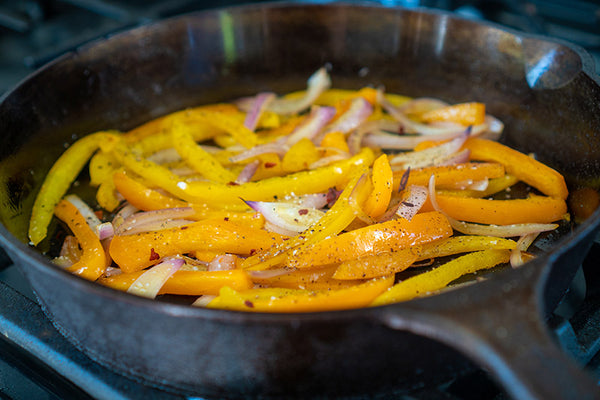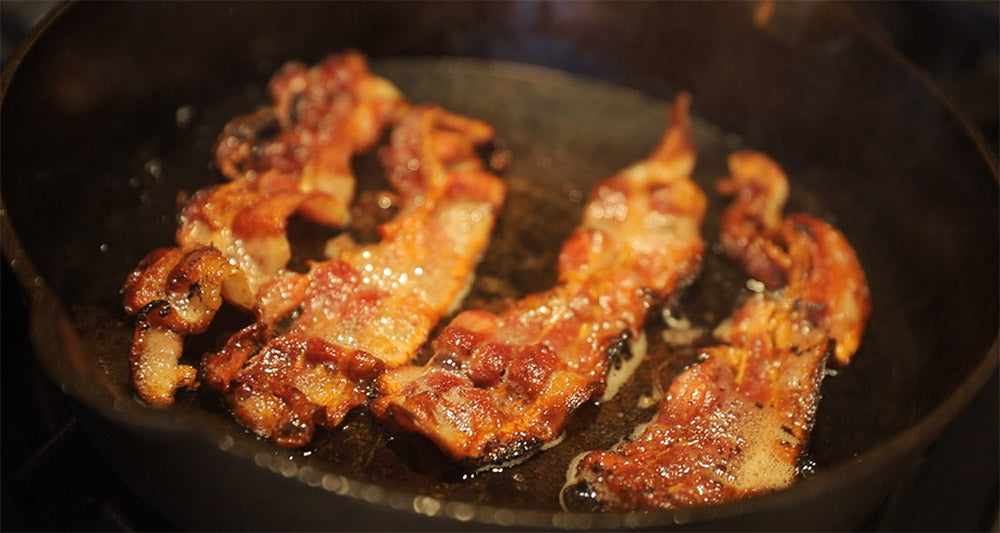First Time Recipes & Cast Iron Skillet Care Guide
You’ve just received your new Lancaster skillet and you’re trying to decide what to create for your pan’s maiden voyage. For our more experienced friends, we recommend that you get started with your tried and true family favorites. For the rest of us, while it's important to understand that there are no right and wrong answers to this question, learning to cook on cast iron is unique and some even consider it an art.
Before Cooking
Remove your new skillet from the package and wash in the sink with warm water and soap. This will be the only time it is necessary to use soap on your cast iron skillet. After rinsing, towel dry to remove any moisture, and your new Lancaster skillet is ready for use.
These recipes and tips will help guide you as you learn how to cook with cast iron and will aid in building up the seasoning on the interior of your pan.
First Time Cooking: Sautéed Onions and Peppers
We recommend starting with vegetables as they are more forgiving than most proteins - they taste delicious and won’t stick to your pan! Keep in mind that using a little bit of oil is necessary to help to keep food from sticking.
1. Start your burner on medium low heat and allow the pan to come up to temperature.
2. Pour about 1 tablespoon of vegetable oil of your choice into the skillet before it gets hot. Depending on the type of burner you use, this will most likely take about 3 minutes.
3. When the oil is hot, throw your sliced onions and peppers into the pan. Stir occasionally and cook until the onions have become translucent and begin to turn a brown caramelized color around the edges.
Enjoy on top of grilled sausages or a juicy burger!

First cleaning
After you have finished enjoying your meal and are ready to clean up, take your pan and wipe out any easily removed residual chunks of food with a paper towel or cloth. If you are able to wipe out any remaining food, rinse your skillet and wipe with a dry clothe. Place the pan on a stove burner on low heat for about 2 minutes to evaporate any excess water. After removing from the heat, wipe the interior of the pan with a paper towel and a few drops of oil or our cast iron seasoning a in order to protect the surface from rust.
For food residue that does not easily wipe out, fill the skillet about half full with water. (NOTE: Never put cold water directly into a hot cast iron skillet. Doing so risks damaging the skillet as a result of temperature shock.) Place the skillet on the stove on medium heat. As the water temperature rises, most food residue should be easily scraped off. After pouring out the water use a chainmail scrubber to remove anything that is still stuck in the pan. After all remaining food is removed, follow the instructions in the first paragraph: rinse, dry, heat, and oil your skillet. By following these simple instructions for cleaning after you cook each time, you will guarantee the longevity of your Lancaster skillet.
As you build layers of seasoning in your new skillet, it will begin to become truly non-stick and will result in less sticking and an easier cleaning process.
Second Serving: Cornbread
There are few dishes that contribute to the seasoning of a cast iron skillet like cornbread. Not only is cornbread a delicious addition to almost any meal, but it does a fantastic job of adding a layer of seasoning to the bottom of the pan as well as the side walls. Cornbread will also give you a chance to explore the concept of baking with your Lancaster cast iron skillet. Check our our Traditional Amish Corn Bread Recipe to get started.

Third Time Around: Bacon
It’s finally time for the bacon! Some of you may have already skipped directly to this step and that’s fine! Take a few strips of your favorite cut and turn your pan on medium heat. The beauty of bacon is that everyone has their own preferences making it difficult to mess up. We love a nice thick cut seared to a crisp on both sides. Whether you preference is soft, crispy, or something in between, enjoying some tasty bacon is an excellent way to add seasoning to your new Lancaster skillet.


